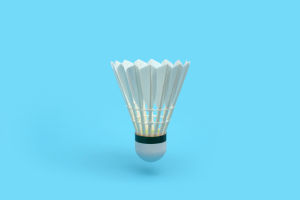Table tennis, or ping pong, is a fast-paced and exciting sport that requires precision, agility, and the right equipment. A key part of your performance on the table lies in your choice of racket.
understanding the nuances of a table tennis racket and how to use it properly can greatly improve your game. In this article, we'll explore the best types of table tennis rackets and how to get the most out of your equipment.
What Makes a Table Tennis Racket Special:
A table tennis racket is a specialized paddle designed to provide the right balance of speed, spin, and control. It consists of three main components: the handle, the blade, and the rubber. Each of these elements plays a crucial role in how the racket performs.
1. Handle:
The handle is your point of contact, and its shape and size should fit comfortably in your hand. The three common types of handles are straight, flared, and anatomic. The straight handle is ideal for players who prefer a more neutral grip, while the flared handle provides more control and comfort for players with a more relaxed grip.
2. Blade:
The blade is typically made of wood, with some incorporating carbon fiber for added strength and speed. The thickness and composition of the blade affect its bounce, control, and speed. Beginners usually benefit from a thicker blade with more control, while advanced players may prefer a thinner blade for faster shots.
3. Rubber:
The rubber on your racket greatly influences the spin and speed of the ball. There are two types: smooth (inverted) and pimpled. Inverted rubber allows for more spin and control, making it the go-to choice for most players. Pimpled rubber, while less common, provides less spin and more speed but is suitable for defensive styles of play.
Best Table Tennis Rackets for Beginners and Advanced Players:
1. Beginner’s Racket:
For beginners, a racket that offers control over speed is essential. A racket with a soft rubber coating and a larger sweet spot can help you develop basic skills, such as consistent ball placement and timing. A good choice is the STIGA Apex or Butterfly 401. These rackets provide an excellent balance of control, durability, and ease of use.
2. Intermediate and Advanced Racket:
Intermediate to advanced players typically look for more speed, spin, and precision. The Butterfly Timo Boll ALC or STIGA Pro Carbon offer a high level of performance with faster play and more spin potential. These rackets are suited for players who have mastered the fundamentals and are ready to take their game to the next level.
Best Way to Use Your Table Tennis Racket:
1. Grip:
Your grip plays a crucial role in how effectively you use your racket. There are two main types of grips: the shakehand grip and the penhold grip. The shakehand grip is more popular and involves holding the racket as if shaking someone's hand. The penhold grip, common in Asian styles of play, has the racket held like a pen, offering greater maneuverability. Choose a grip that feels natural for you and allows you to execute your shots comfortably.
2. Maintain Your Racket:
Keep your racket in good condition by regularly cleaning the rubber surface with a soft cloth and racket cleaner. Storing your racket in a case when not in use will also prevent the rubber from being damaged or worn out. Additionally, avoid hitting the racket against hard surfaces or using it for non-table tennis activities, as this can affect the performance and longevity of the rubber.
3. Mastering Spin:
Spin is a key factor in table tennis. To generate spin, focus on the angle and speed of your strokes. A topspin shot requires brushing the ball with the racket’s rubber at an upward angle, while a backspin shot requires brushing downward. Experiment with different spins during practice to increase your versatility on the table.
4. Timing and Placement:
Timing is everything in table tennis. Make sure to hit the ball at the right moment when it’s in your optimal striking zone. Focus on controlling where the ball lands on the opponent's side of the table, aiming for the edges or corners for a more challenging return. Developing precision in placement will give you a competitive edge over opponents.
Choosing the right table tennis racket and using it effectively is key to enhancing your performance on the table.
Hey Lykkers, experiment with different rackets and techniques, and with consistent practice, you’ll see a noticeable improvement in your game. So, grab your racket, get on the table, and start playing your way to victory!


